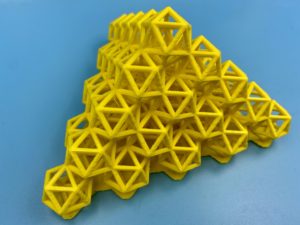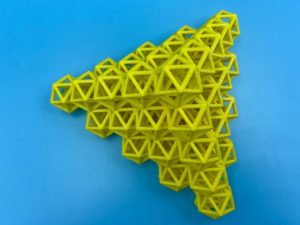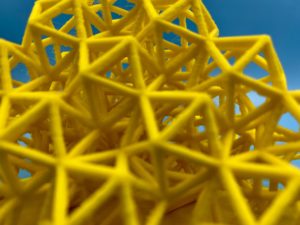Wirecosahedra
When I showed this recent post to my friend and colleague Laura Taalman, aka mathgrrl, she suggested that another approach to creating a model of the underlying structure would be to construct the icosahedra themselves (rather than the negative space), except use wireframes of the icosahedra rather than solid ones to avoid obscuring all of the internal structure. Her encouragement motivated me to create a new OpenSCAD file for this.
Taking pity on the small size of the build plate of the 3D printer that I have access to, Laura even printed the resulting STL file for me. Her machine produced the following lovely results:



Whichever one you like better, this or the Anticos, I think it’s safe to say that the two models bring out different aspects of the same edge-to-edge arrangement of icosahedra. For example, this “wirecosahedra” structure shows better how the edges of neighboring icosahedra coincide. On the other hand, I think if we had only produced this model, it would be hard to discover the octahedra lurking in the corners between the icosahedra — they get a bit lost among all of the edges.
Thanks to Laura for providing another perspective on this arrangement of Platonic solids!

